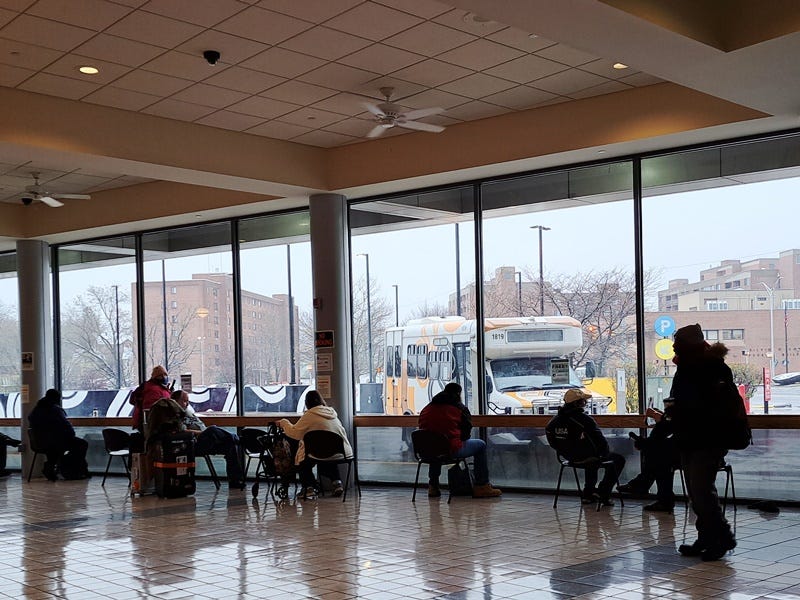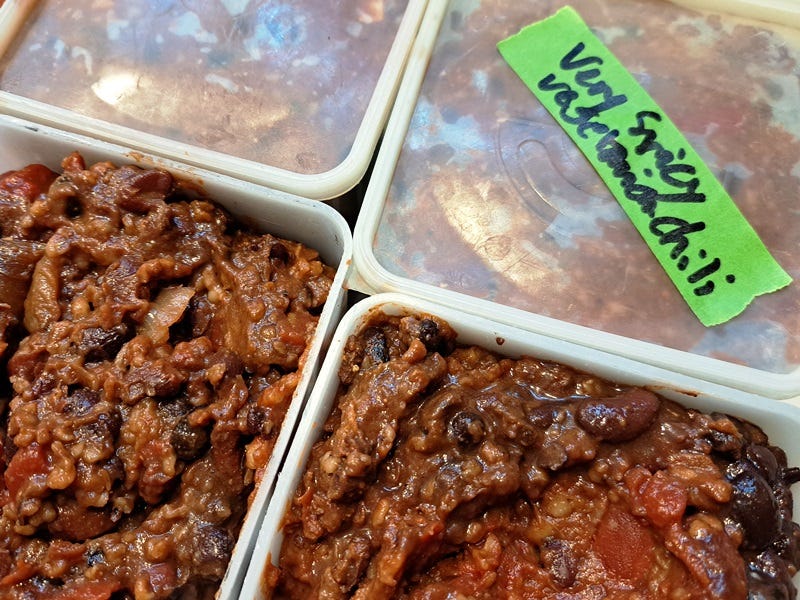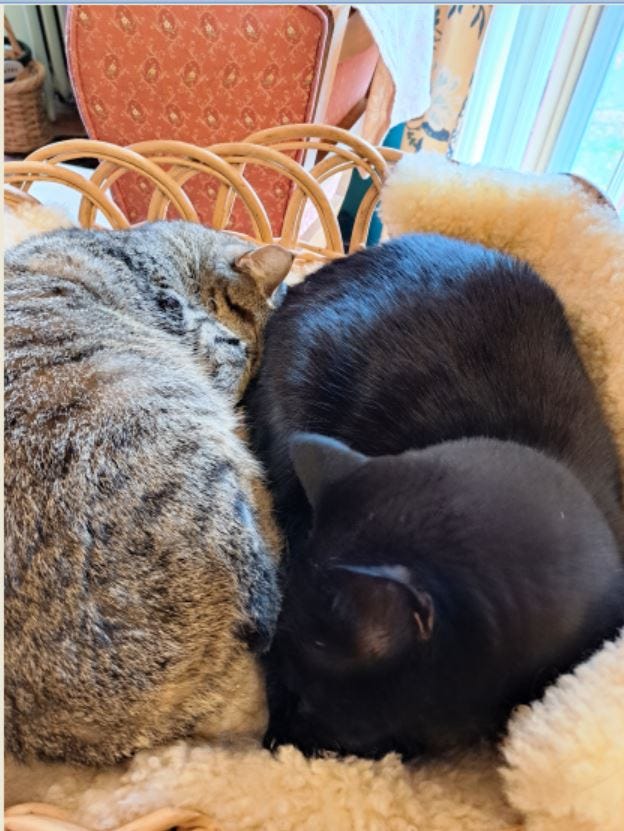Climate change is real and it’s with us. It will get worse. But I’m fairly sure you are not going to move to Canada immediately, and you probably can’t afford to give up your job and spend the rest of your days protesting outside Parliament or corporate headquarters.
The good news is that many governments are, at last, taking action. Of course we need to press for more, and to support politicians who show vision and true leadership. But we can also make a difference, and show willing, by making our own climate changes.
Here are 3 things we can all do in 2023:
Drive and fly less (aim for 25% less)
Skip meat and dairy at least 1 day per week (or at 3 meals that would normally include one or both)
Turn the thermostat down, or up, by at least 2 degrees Fahrenheit or 1 degree Celcius
I was tempted to make a longer list but 3 is a magic number: easy to remember, with natural symmetry: the shape of leaves, the stability of a stool. Or, in Christianity, since today is Twelfth Night or Epiphany: the Trinity, the 3 wise kings.1
In terms of personal contribution to climate change, these 3 things make a real difference. And all 3 are good for your health!
Let’s look at each one without setting exact targets or making hard and fast rules. We’re positioning ourselves for change, moderate change. Yes, moderate. There’s no drama here. No conversion to veganism. No abjuring of all travel. No huge endeavors. You have enough on your plate.
But this is also your planet, and your moment in the history of this world.
We’ve screwed up big time and put much of what we value at risk. But humans don’t like change and are more like sheep than we like to admit. That’s why individual actions are more powerful than people realize.
Social contagion is a concept that sociologists first studied in terms of healthcare and wellness, and was popularized in a book called Connected. Another term sociologists use is “nudge behavior.” It’s easy to recognize: if you’re around people who smoke or eat too much, you’re more likely to do the same. And the reverse is true. Hang out with fit people and you’re likely to become fitter yourself.
We can apply this to politics - in some ways, social contagion is a downside of community - but it’s also directly applicable to lifestyle change. It can be very simple indeed.
“Would you like me to give you a lift?”
“I brought in some leftovers for lunch today.”
“Yes, I rode my bike.”
“I’m taking the Tube.”
“If it’s too chilly for you, here’s a wrap.” (Having soft shawls or lap blankets handy is a pleasant conversation starter, and I’ve found that a lot of people are glad not to be subjected to overheated rooms.)
Even one action a week, however small, will make a contribution. And every single action you take will make the next one easier. You see my emphasis on easy? Adapting to climate change is not going to be easy, overall. But we need to start somewhere. A small action multiplied by millions means a lot more than a hardcore change made by a tiny group. Radical campaigns have their place, but here we’re trying to lower the entry requirement and get lots of people on board.
1. Drive and fly less
Why do people talk about how beautiful European cities are, and film movies in New York and San Francisco? It’s because they were designed before the automobile. Cars make the world ugly.
Cars are inherently dangerous and intrusive: large, heavy, metal objects moving at high speeds. We humans are small, soft, living objects. Cars take up space: they dominate both spatially and visually. Even in European cities now, instead of front gardens and spring daffodils, one often sees nothing but cement paving and cars squeezed into every spare inch.
There are signs of change: “Shifting gears: why US cities are falling out of love with the parking lot.” But environmentalists, train advocates, and city planners often ignore the practical issues we face in choosing to leave the car at home. In the city, you think about crime and crowding. Here in a rural region, the question is whether there’s any public transport at all.
The pandemic, sadly, has been bad for public transit, even in cities like Boston where traffic was already the worst in the country. In New York City, top financiers at big banks came under fire for not setting an example by taking the subway as the pandemic eased: “New York mayor urges Jamie Dimon to ride subway to work.”
I won’t deny the deficiencies of public transit, especially in the US. But it’s not hard to reduce car use. Combine 2 or 3 errands, and to encourage improvements that will make it easier and more pleasant to walk and cycle. Here’s a target: 25% less. Or, if that seems impossible, how about 10%?
Cycling and Walking
Most people’s new year’s resolutions die by the end of the month. The key is making an activity routine, so you don’t have to think about all the details or find that you’ve forgotten something essential. “A place for everything and everything in its place” means a bike lock and somewhere easy to carry it, a basket or paniers or backpack with enough room for helmet and high-viz gear, as well as shopping or briefcase. And bike storage that doesn’t make you clench your jaw when you think about setting off.
Cycling is an extraordinary practical way to get around - high efficiency, low impact. With an ebike, which some cities are beginning to subsidize, or install as bike-shares, your travel radius is going to be a lot bigger.
A lot of people think of walking as a form of exercise, or recreation, but it’s also a practical means of transportation. One way to fit in more walking is simply to walk to the store or library or doctor’s office or station. A brisk walk will get you about 2 miles in 30 minutes. This form of transport requires a change of mindset, as well as an umbrella, backpack, and comfortable shoes.2 But it’s easy and cheap and one of the about the best things you can do for your physical well-being and your state of mind.
I realize how lucky I am to live in a place where it’s a delight to walk, but cities can be great, too. When I lived in New York, we used to walk in the West Village late in the evening. In the country, without street lights, I stick to walking during the day.
It’s suburbs where it’s most difficult to walk. So-called “bedroom communities,” which have no community at all, were only designed for cars. The houses themselves are designed for cars, with garage doors taking up much of their front. But even in these deserts, there are signs of new life, here and there: bike paths and the occasional trail. If you’re going to walk for recreation and exercise and don’t know what the best route is, just check with people walking lively dogs - they’ll have figured out all the options.
#TaketheBus
My 2023 resolution is to take a local bus, here in the Berkshires, at least once. It will be the first time.
I’m keen on trains and had a letter about them in yesterday’s Financial Times: “Time and motion is wrong metric for why rail prevails” (UK papers write great headlines, often with rhymes and puns, but this should have been “time in motion”). I like buses, too, and take buses in London just as often as I take the Tube. But here in rural America I have never once boarded a bus.
Berkshire County, Massachusetts has a bus system, run by one of the state’s RTAs (Regional Transit Authority), but routes are winding, times limited, and online and print information so poorly designed that I have never figured out how to take a bus, to somewhere I want to go and with confidence that I can get home again.
Nonetheless, in the spirit of change I’m pitching to you, I make this resolution and will try again with their website. Soon, I promise.
2. Skip meat and dairy 1 day a week
When I was a child in Protestant Minnesota, the school cafeteria served fish on Fridays. Giving up meat was Catholic, but we did it anyway. This reflects the symbolic importance of meat in the past, and I came across another example in Phineas Finn, the 1868 novel by Anthony Trollope I’m rereading (it’s perfect at the moment because of the political chaos in Washington DC):
Mrs. Bunce was a comfortable motherly woman…and thought it a fair subject for boasting that her children always had meat for dinner. If it was ever so small a morsel, she took care that they had it, in order that the boast might be maintained. The world had once or twice been almost too much for her,--when, for instance, her husband had been ill; and again, to tell the truth, for the last three months of that long period in which Phineas had omitted to pay his bills; but she had kept a fine brave heart during those troubles, and could honestly swear that the children always had a bit of meat, though she herself had been occasionally without it for days together.
Of course we don’t need meat every day, or even every week.
But a lot of vegetarian dishes served at restaurants are boring, and it can be hard to come up with fresh ideas at home that won’t be too drastic or complicated. Here’s a recipe from More Home Cooking, a charming and distinctly non-vegetarian cookbook:
If you happen to be a vegetarian, or run with vegetarians, or don't eat very much meat, vegetarian chili is calling out to you. This recipe, which is embarrassingly simple and always tastes wonderful, has also been intensively child tested, even on picky eaters. You need 1 cup black beans; 1 cup little red beans; 1 chopped onion; 2 big cloves of garlic, minced; and a large can of plum tomatoes, juice and all, plus 2 to 3 cups of water. These ingredients go into a pot, the pot goes on top of the flame tamer, and you go out. In four hours you have vegetarian chili, which the next day can be heated up and put into someone's lunch box.3
There are many new books focused on food, because food in general and especially meat and dairy are important factors in climate change. Here are two I’ve look at, with notes.
Food and Climate Change without the hot air by S. L. Bridle. Written by a UK scientist, this one is hardcore and takes a utilitarian approach to cooking. It’s full of valuable data on specific foodstuffs as well as standard dishes (with a UK orientation, of course), but I can’t recommend it for menu ideas. A related book is How Bad Are Bananas? by Mike Berners-Lee. Check out his website - a lot of useful detail here.
One Pot, Pan, Planet: A Greener Way to Cook for You and Your Family by Anna Jones. This is a big-press, gorgeously illustrated cookbook that says it contains simple family recipes. But not for any family I’ve ever met, even here in Great Barrington! A supper recipe that calls for peas, salted lemon, and sticky dates isn’t exactly a go-to meal. The ingredients and combinations are a bit too exotic, it seems to me: Lemongrass & Tofu Larb, Carrot Soup with Tahini & Rosemary don’t really sound like most people’s home cooking, especially when trying to transition away from meat-based menus.
Over the holidays, I made a few of the Ukrainian Christmas dishes, all plant based. A classic celebratory wheatberry porridge, kutya, was delicious (no surprise that Ukraine puts wheat in central place), as were mushroom-and-rice cabbage rolls. Tatyana Nesteruk’s Beyond Borscht is lovely and practical, and she has a lot of recipes online.
It’s fascinating to see how the invasion of Ukraine, terrible as it is, has speeded up energy transitions, both in terms of shaking loose from Russia and in the development and deployment of renewable technologies. Here’s one article: “Europe Is Learning to Live Without Russian Energy.”
3. Turn the thermostat down (or up)
Buildings use a huge percentage of global energy. There are many things you can do about this, some expensive (though worthwhile), but many simple. The easiest is simply to change the thermostat by a couple of degrees.
I once startled Worldwatch Institute founder Lester Brown by pointing out that the restaurant we were in was air-conditioned to a temperature probably 10F colder than the same room would be heated to in winter. “What’s wrong with Americans?” I said, “Just trying to prove we can control nature?”
Experiencing the seasons means being warmer sometimes and cooler at other times, and dressing for the weather. This is good for us. Humans evolved to cope with temperature variation, and many cultures use temperature changes to promote good health.
I’ve been back in the sauna at Simon’s Rock College again and have been hearing a lot about this. There’s the swimmer who wants a companion for ice dips in the river and the men who cut a hole in the lake so they can take a plunge after working out. We talk about how we’d like to step out of the sauna into a snow bank.
Consider this as you put on an extra sweater and pour a hot drink! And snuggle up!
Yes, I realize that 1/6 now has another meaning, but I am choosing to ignore that here.
From The Green Home (2000): There was jubilation in my London neighbourhood when the evening news announced that there were plans to bring the Underground to our part of London. 'That'll put house prices up 5%, just on the promise', I heard someone say. Using public transport requires somewhat different planning than travel by car, and the following ideas may make you more likely to choose to take the bus or train.
Set aside a shoebox for timetables and maps, and go out of your way to assemble a complete collection (these should be much more readily available). Libraries, town halls and police stations often have some, and bus garages and tube stations should be able to provide the full range. Put information numbers in a prominent place by the telephone, and write them on the top of your shoebox. There may also be a number you can dial to get up-to-the-minute information on cancellations and delays.
Get whatever reduced price fares or cards you are entitled to. British Rail has a wide range of travelcards and there are various concessionary tickets available for buses and the Underground. They are great incentives to use the public transport, for weekend outings as well as shopping.
Get details of last buses, trains and night buses for your area. The number of a reliable minicab service won't go amiss either.
Think about the personal benefits of not driving: time to read, doze or meditate, with no worries about parking or about having a drink.
Allow yourself enough time, so you can catch the right train without killing yourself with a last minute dash to the station. This is a hard habit to get into if you are used to stepping out the door into a car. A book is invaluable when waiting for a delayed train.
A shopping trolley or a rucksack and an easily collapsible pushchair will make all the difference if you have to manage large parcels or a small child.
Working on flexitime makes it possible to travel off-peak, avoiding packed buses and trains and sometimes saving money too.
This recipe, you'll note, has no chili in it. I add chili powder, cumin, and usually some cinnamon and dark chocolate. But that's just me. The original is also yummy. Oh, a little trick: I often throw in some bulghur wheat. This makes for a more complete protein and it looks rather like ground beef, useful if you're dealing with people who at least want to think they're eating meat not just beans.










